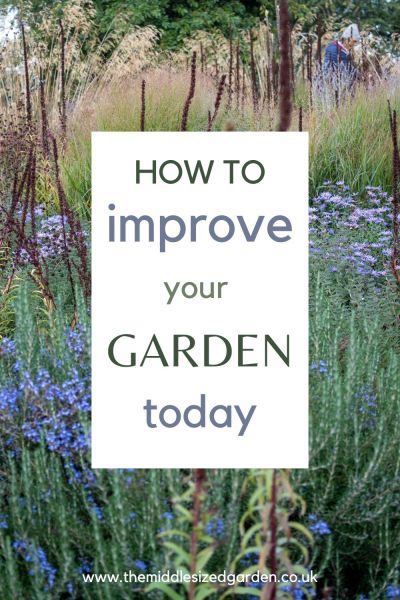This year’s best garden design advice from experts…
What’s been your best garden design advice this year?
On the Middlesized Garden YouTube channel and blog, I talk to many wonderfully different gardening experts.
Most work professionally in the gardening business, so their tips are practical, realistic and effective.
So I thought I would show you my pick of the best garden design advice for different garden situations.
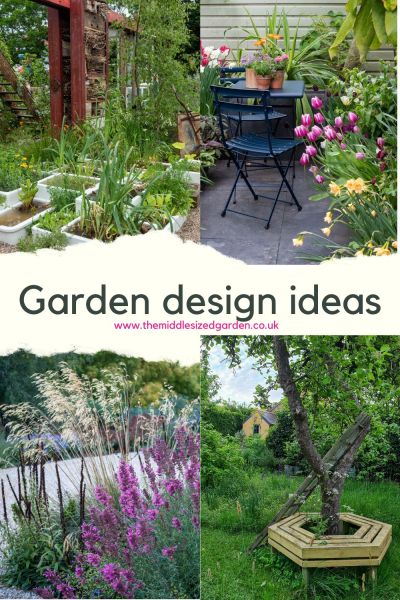
How to group plants in pots for a border effect.
Dan Cooper of the online store Dan Cooper Garden has about 100 pots in a space that measures x by y. He has around 100 pots in that space, but only around 40 different varieties of plant.
His most important tip is to plant one variety of plant per pot. He also says it’s important not to have every pot completely different. ‘There are two to four pots of each planting.’
So, for example, he has four pots packed with Tulip ‘Chansonette’, repeated at intervals around the space. The repetition helps make the display look cohesive, and is more restful on the eye.
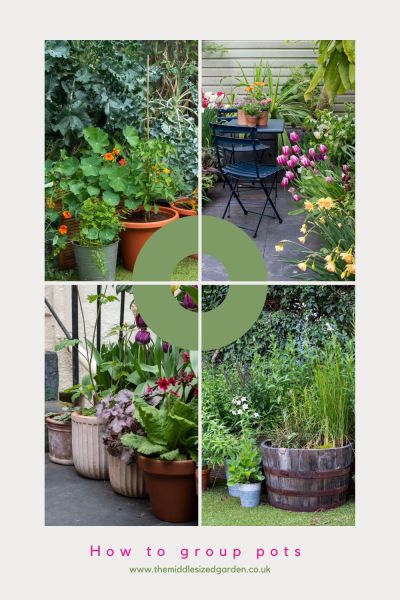
Dan Cooper and Shaun Mooney’s container gardens. You can engage a garden designer to get the best garden design advice for pots as well as gardens.
Garden designer Shaun Mooney also created a complete garden with pots in his rented home. He had no access to the earth at all, so he had planting troughs made, sourcing a maker on eBay. These are higher than the pots in front of them and create a ‘back row’ of the border.
Then you can make middle and front rows of the ‘border’ with pots. Shaun’s money saving tip is to use cheaper mass-produced pots where they can’t be seen. He then collects a few special, more expensive pots and places them where they can be seen.
If you’re having trouble creating the container garden of your dreams, Shaun suggests you engage a garden designer for a consultation. Many people think that garden designers are only for big projects, but you can pay for a just few hours of the best garden advice. And they can also give you plant care advice, too, if you ask for this.
If you want to improve your pots, check out Dan Cooper’s advice on container planting here.
And here are more of Shaun Mooney’s tips on creating a garden with pots when you rent.
The best garden design advice – limit the types of plants
Garden designer Michael McCoy is famous for his contemporary border plantings.
He says you should limit the number of varieties of plants in a border. And the shape and texture of the plants are more important than the colour of the flowers.
Combine three different shapes of plants. You need vertical or vase-shaped plants,horizontal plants and rounded shapes.
Don’t worry about having the border full of flowers at one time. Michael says that you only need three plants to be in flower at any one time for the border to look wonderful, provided that you have fullness and contrast in the planting. ‘In fact, you can have only one flower in bloom, and if it’s repeated around the border, it can give the impression that the border is really dancing.’
If you’re interested in finding the best garden advice on planting, don’t miss Michael’s tips in contemporary naturalistic planting here.
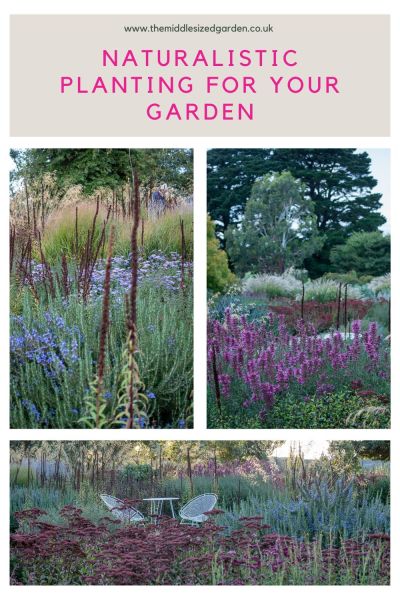
Texture and shape are more important than colour in Michael McCoy’s naturalistic borders
Make space for a pond, however small!
Home gardeners control a huge amount of the open space in most cities and towns, so we have a major impact on wildlife and diversity.
In 2022, both the Royal Horticultural Society and the Society of Garden Designers committed to making gardens more sustainable, more bio-diverse and more wildlife friendly.
And at the top of the list of best garden advice is ‘make space for a pond.’ Water is essential for life. And it’s an important part of ‘wildlife corridors.’ Wildlife can only survive if it’s able to forage, shelter and reproduce in a fairly large area. You may have a park at one end of town and a wood at the other, but if it’s hard for creatures to get from one to the other, then they are trapped in a relatively small area. Ponds and pollinator-friendly planting in the gardens in between can make all the difference.
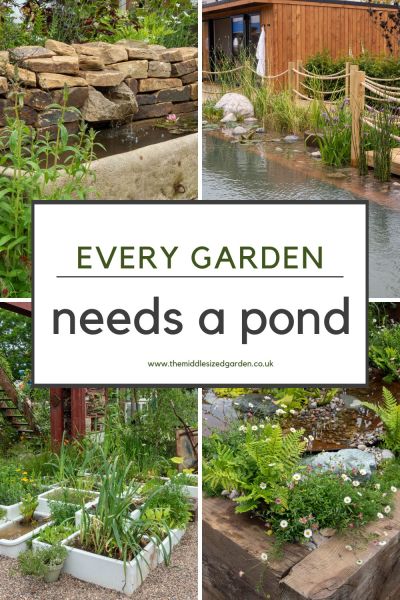
Ponds of all sizes in show gardens at BBC Gardeners World Live.
So every show garden at BBC Gardeners World Live had a pond. You can use any container as a mini pond, but make sure that small creatures can get in and out safely.
It’s also important to make sure that babies and toddlers can’t access the pond as they can drown in a few inches of water. At BBC Gardeners World Live, there were several ponds on raised beds.
There was also a grouping of old sinks on Frances Tophill’s Frances’ Garden. You could use any containers, but the advantage of grouping them is that you can grow different kinds of pond plants in each. For example, one container could be quite shallow for marginal plants, and another deeper.
Be aware that mini ponds dry up quickly in drought so you will need to keep them topped up.
And don’t be afraid of a larger pond in a small garden
Garden owner Anne Vincent re-routed her rainwater to create a large wildlife pond in her narrow town garden. The pond is the main feature of the garden and takes up around one third of the space.
It’s a stunning garden, and by re-routing her guttering to the garden, she’s also helped minimise the run-off from her gutters to the town sewage system. See a small wildlife garden for towns and cities here.
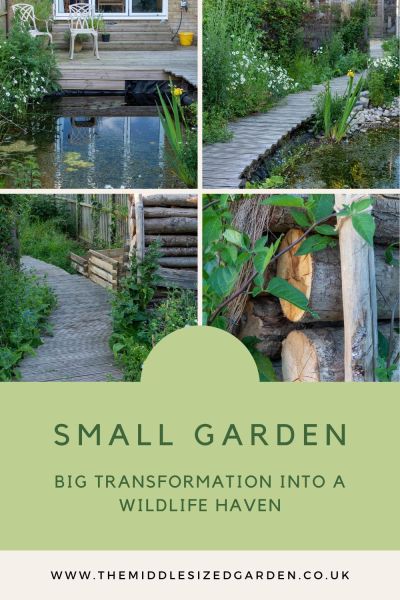
Anne Vincent’s wildlife friendly haven garden is around 70ft long and about 20ft wide.
Is a rock garden the answer to hot, dry summers?
Rock gardens were very fashionable in the first half of the 20th century, but have since fallen out of favour. However, they are an ideal home for drought-tolerant, resilient plants and also a good option if you have a slope in your garden.
Like many people, we had an unusually hot, dry summer this year. But rock gardens, such as the rock garden at Doddington Place Gardens in Kent, didn’t need watering and continued to look good in harsh conditions.
The best garden design advice has always centred on planting the right plants for your climate, but with such changeable weather, we need resilient plants more than drought-tolerant ones. And a rock garden is very resilient.
If you’re thinking about a rock garden, start with the rocks. Amicia Oldfield of Doddington Place Gardens says that rock gardens look much better if you choose a local stone, as it often echoes the architecture.
And garden designer Posy Gentles points out that if people are clearing rocks from their gardens, then they’ll have to pay to have them taken away. So they may be available free or very cheaply on Facebook Marketplace, Freegle/Freecycle or eBay.
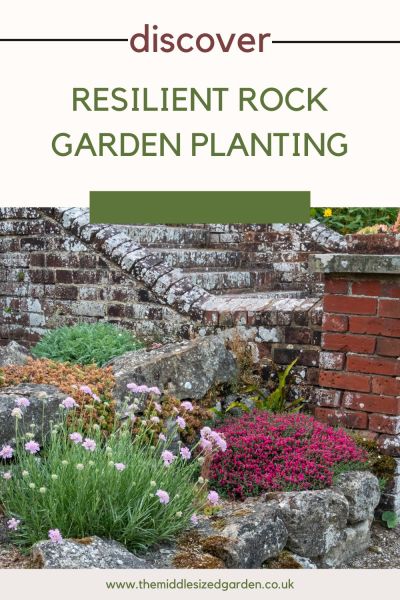
The best garden design advice is to match your plants to the climate and soil – a rock garden is one of the most resilient plantings.
There’s more rock garden advice here.
The best garden design advice – link your house to the garden
Talented writer and stylist Francine Raymond is always a source of the best garden design advice and ideas.
Although she buys from auctions, chain stores and charity shops, she pulls it all together with colour. Her main tip is to link your house and garden through colour.
Francine has a yellow and grey-blue theme running through both her house and her garden. Think about front door, back door, window frames, sheds, benches, pots and more for your colour theme.
See how to connect your indoor and outdoor space, which also features garden designer Lisa Feurtados’s contemporary link between house and garden.
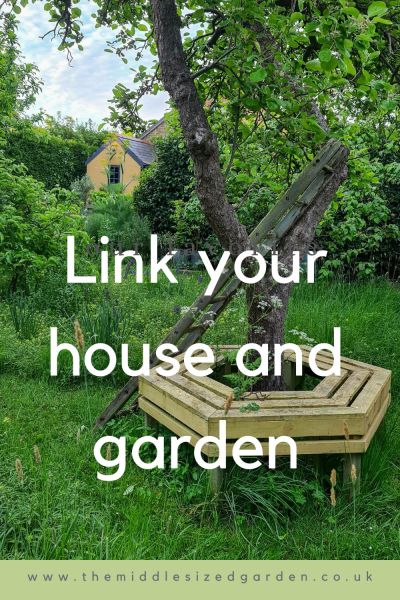
Francine Raymond links her house to her garden by the use of colour. This is probably the best garden design advice I have ever heard!
Or link your house to your garden shed!
When people come into Stephen Ryan’s plant nursery, Dicksonia Rare Plants near Melbourne, they often ask for a fast growing climber to hide an ugly shed. Stephen says that his reply is that there is no need to have an ugly shed.’
There are so many ways of making a shed look better in the garden and some are cheap and easy to do.
You can paint a shed any colour. You can use the colour, materials or architecture of your house as an inspiration for the shed.
And you can experiment with a shed, because it’s a relatively small scale project. Stephen had an ugly flat-roofed shed in his garden, left by a previous owner. When he wanted to add a storey to his flat-roofed house, he and his partner tried their ideas out on the shed first, using it as a template for the house.
They experimented with the colour of the shed before painting the house. And they added a pitched roof and finials to it, to see if they liked the look of it.
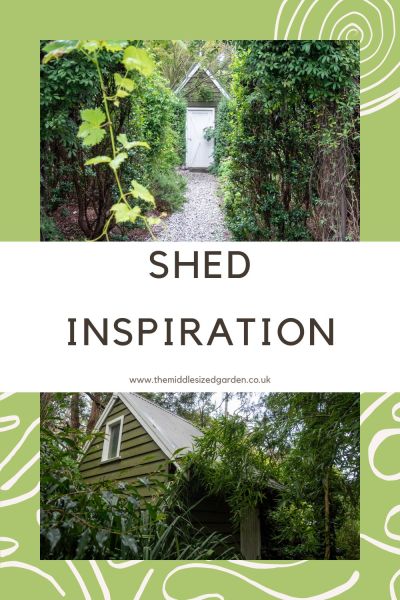
These are both sheds – Stephen Ryan used wooden cladding, paint and roof finials to make them look special.
You can find Stephen Ryan’s best garden advice on the Horti-Culturalists YouTube channel.
For more ideas on renovating sheds, see this post. And see here for ideas on what colour to paint your shed.
Choosing garden furniture is a big garden design decision. Find out whether rattan, wood, metal and stone/stone composites are best for you.
And although it’s not strictly gardening advice, it’s well proven that if you write down your goals, you’re more likely to achieve them. So here are 10 gardening goals to get you started with your garden!
Pin to remember this year’s best garden design advice
And do join us – see here for a free weekly email with more gardening tips, ideas and inspiration.
